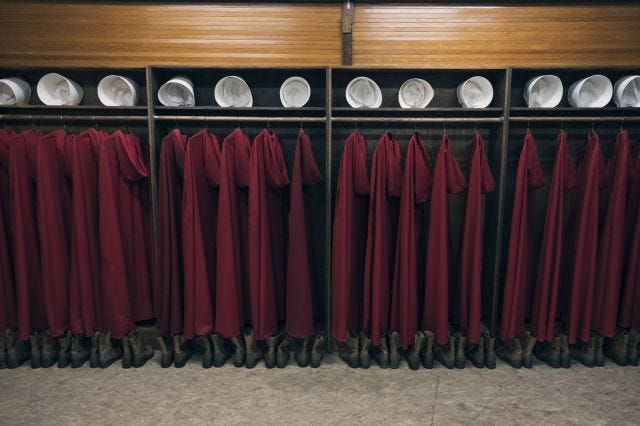So What, Who Cares (vol 3, issue 29) Why free returns matter as much as free shipping does
Hello!
Self-promotional note: This week's Flash Flashcast is up, and we spend a lot of time wondering exactly what's up with the doors in Star Labs.
Also, I've been having some weird funkiness in image placement in some newsletters. I'm loath to go back in and hand-edit HTML like a savage from the 1990s, but if things are looking weird on your screen, please let me know.
*

Never underestimate the role shipping plays in e-commerce. Walmart and Amazon have been vying to become the habit-forming online retailer for American shoppers, and Amazon's enjoyed a comfortable first-mover advantage for much of that time. The two have engaged in rival shopping-event days (Walmart rolled out a huge sale in response to Amazon's made-up Prime Day holiday), rival grocery services, rival subscription-goods services, and a race to the bottom on how little consumers have to spend to get items shipped to them for free. The latest move? As Bloomberg reported, Amazon.com lowered its free shipping threshold to $25 from $35, lower than Walmart.com's minimum purchase for free shipping by $10.
So what? For consumers, free shipping for a package en route is nice -- but what they may begin paying attention to is what it costs to return a package. Amazon offers free returns on the clothing and shoes it fulfills, but if you've purchased an item fulfilled by a third-party vendor (think a pair of sandals fulfilled by another company but available for purchase on Amazon), you're at the mercy of the vendor.

A cursory survey of clothing or shoe offerings shows free returns are clearly marked on Amazon fulfillment, while third-party fulfillment and return policies require an extra click or two. Walmart.com has a similar policy -- and the added advantage of having a network of stores coast-to-coast where shoppers can walk in items for quick returns, refunds and exchanges. This will be great for suburban, exurban and rural e-commerce customers: One of the appealing traits of e-commerce is its ability to deliver stuff that's hard-to-find in your area. But if that hard-to-find stuff is not to your liking, being able to return it should be nearly as frictionless as buying it was.
Who cares? Environmental types have had their eyes on e-commerce as a whole. Emissions nightmares from idling delivery trucks aside, e-commerce has managed to disrupt a whole lot of traditional supply chain models -- everything from inventory management and storage to packaging to fulfillment to returns. There are opportunities at every link in the chain to adopt sustainable practices. For example, changing the packaging can reduce overall resources consumed and also reduce the number of damaged deliveries and returns for the retailer. Here's how luggage maker TOM BIHN does it:
The company now uses shipping boxes made of recycled cardboard that are right-sized to prevent the use of excess materials, and crush tested to prevent product damage, as well as to reduce the rate of return shipments. Additionally, TOM BIHN ships every order via UPS carabon neutral, where carbon offsets are purchased to balance out the emissions produced by the transportation of shipments.

There is no blithe assurance that e-commerce is actually better for the environment -- experts are still balancing the packaging and transit demands against the transit resources used when people drive to stores to get stuff, the new supply chains and inventory practices against the way retailers used to operate.
The shipping wars among e-commerce players present opportunities -- for consumers to get their goods cheaply and for retailers to grab a larger share of regular spenders. They may also be a surprising prompt to look at the logistics systems that undergird modern American life.
*
Your pop culture recommendation for the day: I am here for any and all interviews with costume designer Ane Crabtree about how she devised the iconic, evocative costumes for The Handmaid's Tale. Here are three I've enjoyed reading for how Crabtree walks readers through all the elements she tossed into the creative blender before hitting 'pulverize':

Vanity Fair's "The Handmaid’s Tale: The Hidden Meaning in Those Eerie Costumes" -- "I always think about Miuccia Prada in 1990 ... She said the smartest design comes from military uniforms, and I couldn’t agree with her more. As much as I disdain certain ideas about the military, they got the design thing down."
Racked's "How The Handmaid’s Tale Fits Into Our Ideas of Dystopian Dress" -- “I think of China and its propaganda posters, and Hitler and his beautiful Leni Riefenstahl photographs. So dystopian and utopian, so fucked up, but beautifully designed.”
Vulture's "From the Handmaids to the Marthas, How Each Handmaid’s Tale Costume Came Together" -- “I’m throwing in a very tiny surreal mist to the clothing so it feels like a dream … You can’t quite tell if you’re awake or dreaming or having a nightmare, and part of that is just the reaction to all that was happening in the states with politics.”
Interviews with costume designers are among my favorites, mostly because they are capable of explaining plot and characterization through specific wardrobe details. If you read Tom & Lorenzo's style breakdowns of each character and episode in Mad Men, you'll see exactly how much heavy lifting the clothing does in telling the story.
*

